In the world of quantum computing, the spotlight often lands on the hardware: qubits, superconducting circuits, and the like. But it’s time to shift our focus to the unsung hero of this tale – the quantum software, the silent maestro orchestrating the symphony of qubits. From turning abstract quantum algorithms into executable code to optimizing circuit designs, quantum software plays a pivotal role.
Here, we’ll explore the foundations of quantum programming, draw comparisons to classical computing, delve into the role of quantum languages, and forecast the transformational impact of this nascent technology. Welcome to a beginner’s guide to quantum software – a journey to the heart of quantum computing.
Quantum vs. Classical Programming: The Core Differences
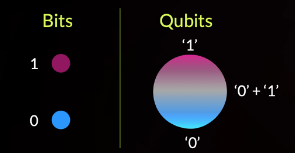 At its heart, the world of quantum computing contrasts starkly with that of classical computing. The differences extend beyond hardware to the very core of programming. Let’s illuminate some of the primary distinctions that delineate these parallel universes of computing.
At its heart, the world of quantum computing contrasts starkly with that of classical computing. The differences extend beyond hardware to the very core of programming. Let’s illuminate some of the primary distinctions that delineate these parallel universes of computing.
Classical computers, the type most of us use daily, operate on binary data. This means they process information in “bits”, which are either in a state of 0 or 1. Classical programs, thus, revolve around manipulating these bits using logical operations.
Quantum computers, however, function quite differently. They leverage the quirks of quantum physics to process information via “qubits”. Unlike bits, a qubit can exist in multiple states simultaneously, thanks to a phenomenon called superposition. Additionally, qubits can also be entangled, meaning the state of one qubit can instantaneously affect the state of another, no matter the distance between them.
Therefore, programming a quantum computer necessitates a new approach, new logic, and an entirely new set of programming languages. Quantum software developers do not merely instruct a sequence of operations; they choreograph a dance of qubits, harnessing the peculiar properties of quantum physics to solve complex problems. The beauty of quantum programming lies in its ability to weave a ballet of superpositions and entanglements to achieve solutions exponentially faster than classical computing.
Quantum computing does not replace classical computing. Instead, it complements it, addressing problems that are currently unsolvable with classical computers due to the type of calculation and its complexity. Quantum software, therefore, requires a firm understanding of both classical and quantum principles to effectively leverage the strengths of each and navigate their respective challenges.
The Building Blocks of Quantum Programming
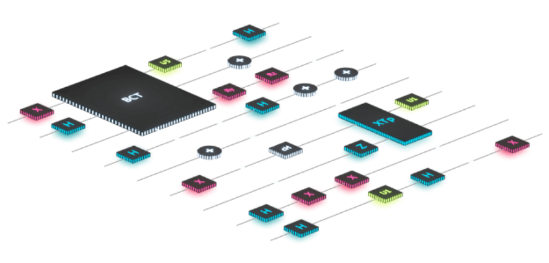
Quantum programming demands a unique set of terms to address the building blocks of a quantum program. These terms help us to describe and navigate the multi-dimensional universe of quantum computation. Here, we highlight three of these terms: quantum gates, quantum circuits, and quantum algorithms.
Quantum Gates: Much like classical computers use logical gates (AND, OR, NOT), quantum computers operate with quantum gates. But unlike their classical counterparts, quantum gates are reversible and deal with probabilities. They manipulate the state of qubits to perform quantum operations. A few examples include the Pauli-X, Pauli-Y, Pauli-Z, Hadamard, and CNOT gates.
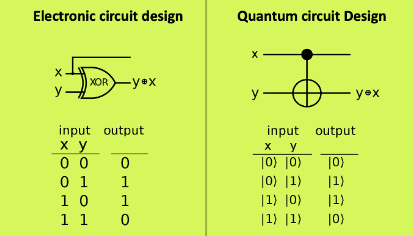
Quantum Circuits: A sequence of quantum gates forms a quantum circuit. The quantum circuit defines the transformations that the qubits undergo to solve a given problem. However, the circuit’s behavior is inherently probabilistic due to the nature of quantum physics.

Quantum Algorithms: Quantum algorithms are sequences of quantum circuits designed to perform a specific task or solve a specific problem, much like a sequence of instructions forms a classical algorithm. Some popular quantum algorithms include Shor’s algorithm for factoring large numbers, and Grover’s algorithm for searching unsorted databases. Quantum algorithms exploit the phenomena of superposition and entanglement to outperform classical algorithms for certain problem types.
In the realm of quantum programming, we’re essentially designing a choreographed sequence that manipulates qubits through these quantum gates, forming quantum circuits to execute quantum algorithms. All this, to solve problems that classical machines find insurmountable.
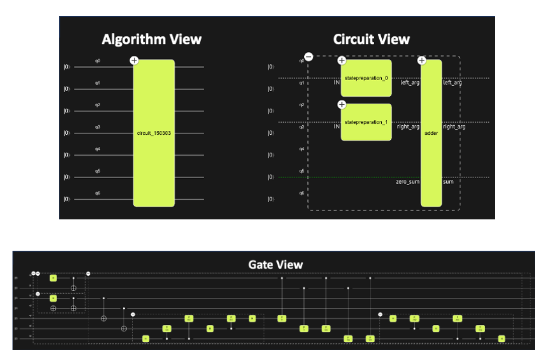
The Quantum Programming Landscape
 The world of quantum programming is as diverse as the set of problems it aims to solve. Various quantum programming languages and software platforms have emerged to address different needs, each with its unique approach and strengths. Here, we introduce you to this rich landscape.
The world of quantum programming is as diverse as the set of problems it aims to solve. Various quantum programming languages and software platforms have emerged to address different needs, each with its unique approach and strengths. Here, we introduce you to this rich landscape.
Quantum Programming Languages: Just as classical computing has its C++, Python, and Java, quantum computing too has developed its languages. For example, Q# from Microsoft and Qiskit from IBM are two of the most popular quantum programming languages today. They allow you to define and manipulate quantum states, apply quantum gates, and measure the results.
Here we can see qiskit code that creates a quantum register with two qubits and applies a Hadamard gate to the first qubit and a CNOT gate to the two qubits. The code then measures the two qubits.

Software Platforms: Aside from standalone programming languages, there are software platforms designed to aid in quantum development. For instance, our platform at CLASSIQ provides an intuitive, visual way to design quantum circuits and algorithms. It is this high-level abstraction that allows quantum developers, beginners, and experts alike, to harness the power of quantum computing without getting bogged down in the low-level details of gate definitions.
Remember, each tool and language has its strengths, and the choice often depends on the problem you’re tackling. It’s about choosing the right tool for the right job, much like in the world of classical computing.
Quantum Programming Process
While programming a quantum computer can initially seem daunting, a high-level perspective simplifies the task into a series of logical steps. Here’s an overview of the general process:
Problem Formulation: The first step in quantum programming is defining the problem you want to solve. This might be optimizing a financial portfolio, simulating a chemical reaction, or breaking an encryption code. It’s crucial to understand that not all problems are suited for quantum solutions. Some tasks may be more efficiently handled by classical computers. Therefore, selecting the right kind of problem is a pivotal decision.
Algorithm Selection: Once you have defined the problem, the next step is to choose a quantum algorithm that can solve it. There is a growing library of quantum algorithms, each designed to address a particular type of problem. Some algorithms are well-suited for optimization tasks, while others are designed for simulation or machine learning.
Implementation: With the problem and algorithm in hand, you can now proceed to implementation. This is where quantum programming languages and platforms come into play. You translate the chosen algorithm into quantum code using your selected language or platform. This is often the most technical part of the process, and it can involve complex tasks like designing quantum circuits and managing quantum states.
Execution and Analysis: Finally, you execute your quantum program on a quantum computer or simulator and analyze the results. Since quantum computing is probabilistic, you may need to run your program multiple times to achieve a statistically significant result. The analysis often involves interpreting the quantum results in the context of your original problem.
Just like learning to program in a classical sense, the path to becoming proficient in quantum programming involves practice, patience, and a whole lot of curiosity.

The Future of Quantum Computing
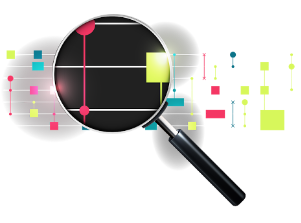
The implications of quantum computing are broad and promising. As we refine our abilities to harness and manipulate quantum phenomena, we’ll witness quantum computers unlocking solutions to some of the world’s most complex and currently unsolvable problems.
Innovation in Multiple Industries: Quantum computing has the potential to revolutionize various industries. Pharmaceutical companies, for example, could use quantum systems to simulate and analyze complex molecular structures, leading to new drug discoveries. The financial sector could leverage quantum algorithms for better risk assessment, portfolio optimization, and fraud detection.
Improved Data Security: The prospect of quantum computers breaking current encryption methods is a cause for concern, yet it also presents an opportunity. As we advance in quantum computing, we’ll simultaneously develop quantum-resistant encryption techniques, creating a new era of data security.
Scientific Discovery: Quantum computing promises to supercharge scientific discovery. In fields such as material science, quantum simulations can facilitate the discovery of new materials with desired properties. In climate science, it could offer more accurate climate predictions by better modeling complex systems.
While these exciting possibilities lie on the horizon, it’s important to remember that the quantum computing journey has just begun. It’s a field ripe for exploration and innovation.
As we transition from theory to practice, from abstraction to application, quantum programming will play an increasingly central role. By learning the principles of quantum programming today, you’re not only preparing for a quantum-powered future but actively participating in its creation.






